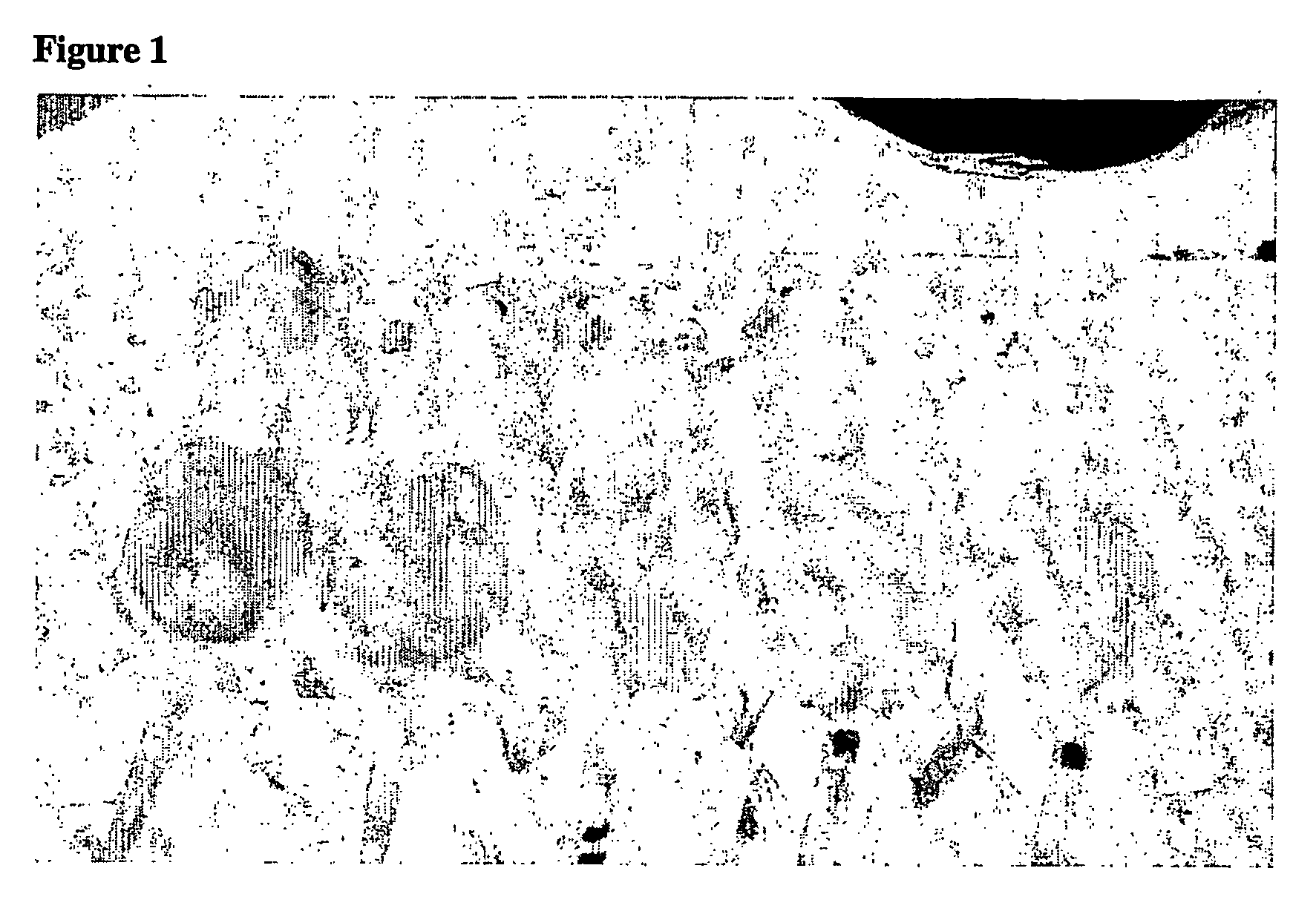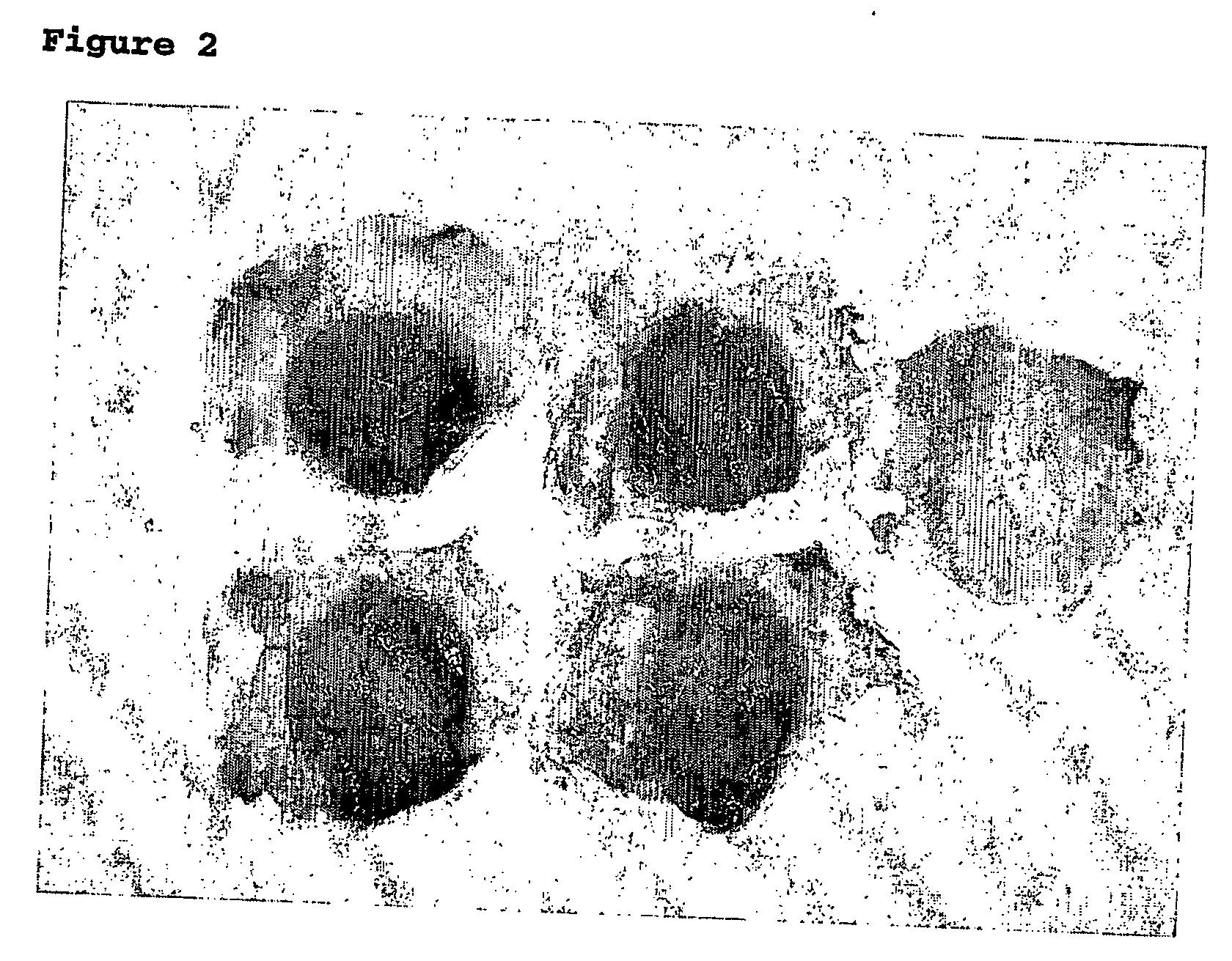Method of treatment of systemic injury secondary to burns
a systemic injury and burn technology, applied in the field of systemic injury secondary to burns, can solve the problems of significant impact on morbidity and mortality, no recognised effective treatment or prevention method for such organ failure, poor morbidity and mortality prognosis,
- Summary
- Abstract
- Description
- Claims
- Application Information
AI Technical Summary
Benefits of technology
Problems solved by technology
Method used
Image
Examples
example 1
Inhibitory Effects of PMX53 on Secondary Lung Injury After Cutaneous Burns in Rats
[0115] Female Wistar rats of body weight 250-300 grams were used in this study. The rats were divided into three groups:
Group 1burn-only (n = 4);Group 2burn plus PMX53 treatment (n = 4); andGroup 3control rats without burn or drug treatment(n = 2).
[0116] PMX53 treatment involved a subcutaneous injection of PMX53 in distilled water at a dose of 10 mg / kg 30 minutes before the burn.
[0117] With the rats under deep anaesthesia, a closely-clipped area of skin on the back equivalent to 30% of total skin area was exposed to water at a temperature of 75° C. for 30 seconds. This resulted in a full thickness skin burn (Schmid et al, Shock 8(2): 119-124, 1997). To prevent rapid death from the burn, rats were immediately treated with an intraperitoneal infusion of 8-10 ml normal saline. At the same time Evans Blue (EB) at a concentration of 20 mg / kg was injected via the femoral vein. The rats were then kept on ...
example 2
Determination of Pulmonary Permeability
[0127] For the determination of pulmonary permeability, animals are given 125I albumin (˜1 μCi) via a tail vein catheter, and are allowed to stabilize for 30 min to establish postoperative equilibrium. During the stabilization and experimental periods, lung perfusate is collected every 10 min. Throughout the experimental period, samples of blood (0.3 ml) are withdrawn at 1 hour intervals. The blood samples are used for the measurement of total albumin concentration, and the specific activity of 125I-albumin is used for the calculation of pulmonary albumin loss, as described below.
[0128] The heart and lungs are excised in toto, the left lung is lavaged three times with 3.5 ml Ringer's lactate solution, and the effluent bronchoalveolar lavage (BAL) fluid is collected. Blood and BAL fluid are weighed and counted for 125I activity, and the lung permeability index (LPI) is calculated using the following formula:
LPI=BAL-125I(cpm / g) / blood-125I (cpm...
example 3
Inhibitory Effects of PMX53 on Burns Through Topical Administration
[0130] The study in Example 1 demonstrated that pre-injection of PMX53 subcutaneously significantly inhibited the release of MPO in the lungs 4 hours after severe burns (30% of surface area & secondary degree). However, the neutrophil infiltration in the burned area was not apparent in this model. It was also of interest to determine whether systemic administration of a C5a antagonist was required for the treatment or prevention of organ dysfunction in burned patients, since it may be advantageous for patients not to have systemic suppression of aspects of their immune system after a severe burn.
[0131] The inhibitory effect of topically applied PMX53 on neutrophil infiltration following a burn was examined after a 6 hour period. In order to verify any effect of PMX53 on the immune system, immunoglobulin 4 (IgG) levels were examined. IgM levels can be examined using similar methods.
[0132] The kinetics of the passag...
PUM
| Property | Measurement | Unit |
|---|---|---|
| Therapeutic | aaaaa | aaaaa |
| Affinity | aaaaa | aaaaa |
Abstract
Description
Claims
Application Information
 Login to View More
Login to View More - R&D
- Intellectual Property
- Life Sciences
- Materials
- Tech Scout
- Unparalleled Data Quality
- Higher Quality Content
- 60% Fewer Hallucinations
Browse by: Latest US Patents, China's latest patents, Technical Efficacy Thesaurus, Application Domain, Technology Topic, Popular Technical Reports.
© 2025 PatSnap. All rights reserved.Legal|Privacy policy|Modern Slavery Act Transparency Statement|Sitemap|About US| Contact US: help@patsnap.com



